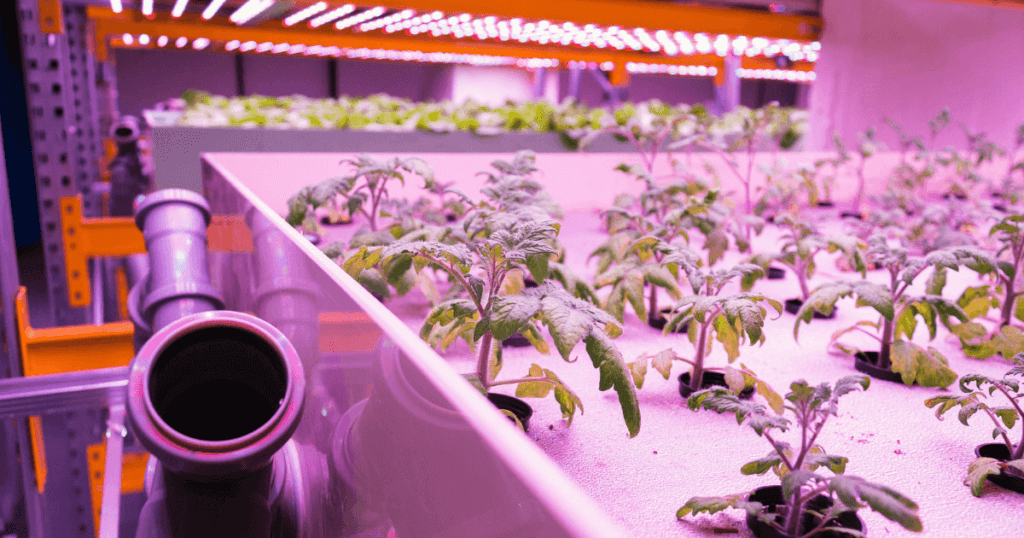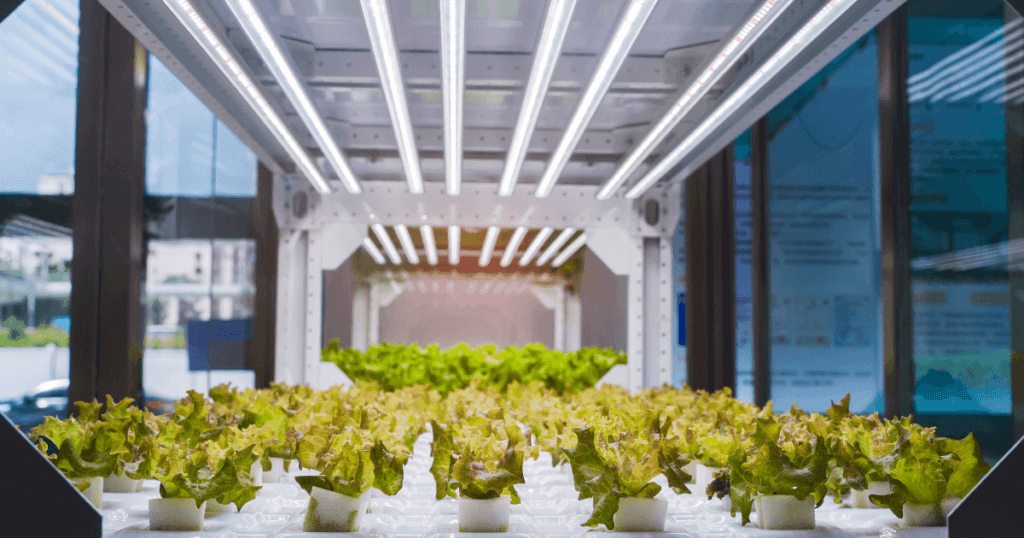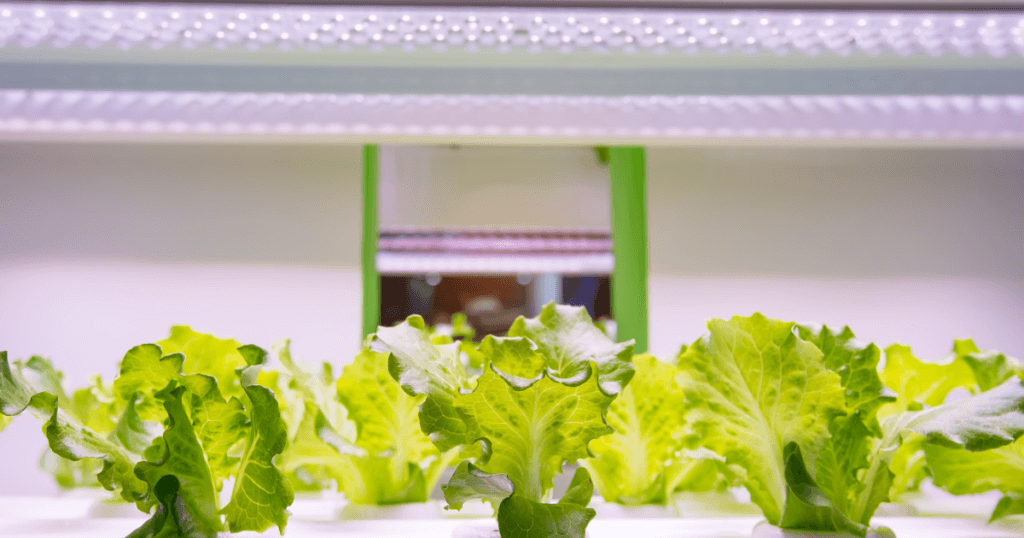Illuminating Indoor Farming with Lighting Systems

Indoor farming has revolutionized the agricultural industry by providing a controlled environment for cultivating crops year-round. One of the key elements that have contributed to the success of indoor farming is advanced lighting systems. Lighting systems designed specifically for indoor farming play a crucial role in providing the right spectrum and intensity of light necessary for plant growth and development. This article will explore the various aspects of lighting systems and their significance in illuminating indoor farming.
Table of Contents
Why Lighting Systems Matter in Indoor Farming
Maximizing Photosynthesis Efficiency
Light is one of the primary drivers of photosynthesisThe process by which plants convert light energy into chemic... More, the process by which plants convert light energy into chemical energy. Indoor lighting systems optimize photosynthesisThe process by which plants convert light energy into chemic... More efficiency by simulating the natural sunlight spectrum and adjusting the light intensityThe level of brightness or luminous flux of light reaching a... More. This allows plants to grow faster and produce higher yields than traditional outdoor farming methods.
Tailored Spectrum for Plant Growth
Different stages of plant growth require specific light spectra. Lighting systems used in indoor farming can be fine-tuned to deliver the optimal spectrum for each growth stage. For example, blue light promotes vegetative growth, red light stimulates flowering, and a balanced combination enhances overall plant health. By providing tailored light spectra, lighting systems ensure that plants receive the right kind of light at each stage of their growth cycle.
Extend Growing Seasons
Lighting systems enable indoor farmers to extend growing seasons and cultivate crops regardless of the external climate. By providing a consistent and reliable light source, farmers can overcome limitations imposed by seasonal changes, enabling them to grow crops throughout the year. This increases productivity and ensures a steady supply of fresh produce for consumers, regardless of the season.
Types of Lighting Systems Used in Indoor Farming
High-Pressure Sodium (HPS) Lights
HPS lights have long been the go-to choice for indoor farming due to their efficiency and cost-effectiveness. These lights emit light in the yellow and red spectrum, making them suitable for the flowering stage of plant growth. HPS lights have a long lifespan and produce high output per watt, making them an economical choice for growers.
Light-Emitting Diodes (LEDs)
In recent years, LED lighting systems have gained popularity in indoor farming due to their versatility and energy efficiencyThe ratio of useful energy output to the energy input in an ... More. LEDs are available in a wide range of spectra, allowing growers to tailor the light output to the specific needs of their crops. LED lights also generate less heat than other lighting systems, reducing the need for additional cooling equipment and minimizing energy consumption.
Fluorescent Lights
Fluorescent lights, such as compact fluorescent lamps (CFLs) and T5 fluorescent tubes, are commonly used in small-scale indoor farming operations. These lights are affordable, easy to install, and produce low heat, making them suitable for smaller spaces. While fluorescent lights are less efficient than HPS lights or LEDs, they can still provide sufficient light for certain crops, such as herbs and leafy greens.
Key Factors to Consider in Lighting Systems for Indoor Farming
Light Intensity
The intensity of light plays a crucial role in plant growth. Different crops have varying light intensityThe level of brightness or luminous flux of light reaching a... More requirements, and choosing a lighting system that can deliver the appropriate level of light output is essential. Light intensityThe level of brightness or luminous flux of light reaching a... More is typically measured in foot candles or lux, and understanding the specific light requirements of your crops will help determine the ideal lighting system for your indoor farm.
Energy Efficiency
Indoor farming requires a significant amount of energy to power lighting systems continuously. Therefore, energy efficiencyThe ratio of useful energy output to the energy input in an ... More is a crucial factor to consider when selecting lighting systems. LED lights, for instance, are known for their high energy efficiencyThe ratio of useful energy output to the energy input in an ... More, consuming significantly less power than traditional lighting options. Investing in energy-efficient lighting systems can save long-term costs and reduce environmental impact.
Heat Management
Excessive heat can negatively impact plant growth and increase the risk of plant diseases. Therefore, proper heat management is essential when using lighting systems in indoor farming. With their low heat output, LED lights help maintain optimal growing temperatures, reducing the need for additional cooling equipment. Adequate ventilation and air circulation systems should also be in place to dissipate any excess heat generated by the lighting systems.
Lifespan and Durability
Lighting systems for indoor farming are a long-term investment, and choosing systems with a long lifespan and durability is crucial. LED lights, in particular, have a longer lifespan than other lighting options, reducing the frequency of replacements and maintenance costs. Investing in high-quality lighting systems ensures that your indoor farm operates smoothly and efficiently over an extended period.
Adjustable Light Spectra
Different crops have varying light requirements, and the ability to adjust the light spectra can significantly impact plant growth and quality. Lighting systems that allow you to fine-tune the light spectrumThe range of wavelengths within the electromagnetic spectrum... More through adjustable settings or interchangeable LED panels offer flexibility and customization. This feature particularly benefits farms growing crops with distinct light requirements.
Implementing Lighting Systems in Indoor Farming
Designing an Optimal Lighting Layout

Proper planning and design of lighting systems are essential for maximizing their effectiveness in indoor farming. Factors such as the growing area’s layout, the plants’ height, and the desired light distribution should be considered. Positioning the lights at the appropriate height and spacing ensures uniform light coverage and minimizes shading.
Light Timing and Photoperiod Control
Like outdoor plants, indoor crops require a specific photoperiodThe duration of light and dark periods in a 24-hour cycle. C... More (light and dark cycle) for healthy growth and development. Lighting systems equipped with timers or programmable controls allow farmers to mimic natural light cycles and provide consistent photoperiods. This feature is essential for crops that require specific day-length conditions to initiate flowering or fruiting.
Integration with Automation Systems
Incorporating lighting systems into an automation framework can streamline operations and improve efficiency in indoor farming. Automation systems can control the timing, intensity, and duration of lighting cycles, eliminating the need for manual adjustments. Integrating environmental sensors and monitoring systems allows for real-time adjustments based on temperature, humidity, and other environmental factors, ensuring optimal growing conditions.
Conclusion
Lighting systems are vital in illuminating indoor farming by providing the necessary light spectrumThe range of wavelengths within the electromagnetic spectrum... More and intensity for plant growth. These systems have revolutionized crop cultivation by maximizing photosynthesisThe process by which plants convert light energy into chemic... More efficiency, tailoring the light spectrumThe range of wavelengths within the electromagnetic spectrum... More, and extending growing seasons. High-pressure sodium lights, LEDs, and fluorescent lights offer different advantages. They can be tailored to meet the specific needs of indoor farms. Light intensityThe level of brightness or luminous flux of light reaching a... More, energy efficiencyThe ratio of useful energy output to the energy input in an ... More, heat management, and durability should be considered when selecting lighting systems. Proper planning, light timing control, and integration with automation systems enhance the effectiveness of lighting systems in indoor farming. With the right lighting systems, indoor farmers can optimize crop production, increase yields, and provide consumers with a steady supply of fresh, locally-grown produce.
FAQs – Indoor Farming Lighting Systems
Other Useful sites related to indoor farming lighting systems
- https://www.lighting.philips.com/application-areas/specialist-applications/horticulture/vertical-farming-led-lights
For individuals keen on understanding and potentially employing advanced horticultural practices, the Philips Vertical FarmingA method of growing plants in vertically stacked layers or t... More LED Lights webpage is a beneficial resource. The page concisely overviews Philips’ LED lighting solutions tailored for vertical farmingA method of growing plants in vertically stacked layers or t... More. It explains the technology behind their lighting systems and how they can facilitate plant growth in an environmentally conscious way. The site also includes case studies and research findings that lend a practical perspective to the theoretical information. This page offers novice and seasoned indoor farmers a useful look into modern farming technology. - https://www.freshfruitportal.com/news/2022/05/05/five-things-indoor-farmers-should-know-when-choosing-their-grow-lights/
For individuals exploring indoor farming and the role of grow lights in such endeavours, the article on Fresh Fruit Portal titled “Five Things Indoor Farmers Should Know When Choosing Their Grow Lights” could be quite informative. This page provides a succinct rundown of important factors that indoor farmers should consider when selecting their grow lights. It offers practical advice and sheds light on the complexities of choosing the right lighting system. Whether you’re an established indoor farmer or just beginning your journey, this article could be a useful guide to understanding the nuances of grow light selection. - https://www.linkedin.com/pulse/illuminating-future-indoor-farming-benefits-properly-designed
The article gives a detailed perspective on the importance of an appropriate light plan and its impact on crop yieldThe amount of crop or harvest produced from a given area or ... More and quality. It presents insights into the relationship between light intensityThe level of brightness or luminous flux of light reaching a... More, duration, and spectrum, and how they affect plant growth. Whether you are an industry professional or a hobbyist, this piece could enhance your understanding of the vital role light plays in indoor farming.

Pingback: Mastering Climate Control in Indoor Farming - indoorfarminghub.com